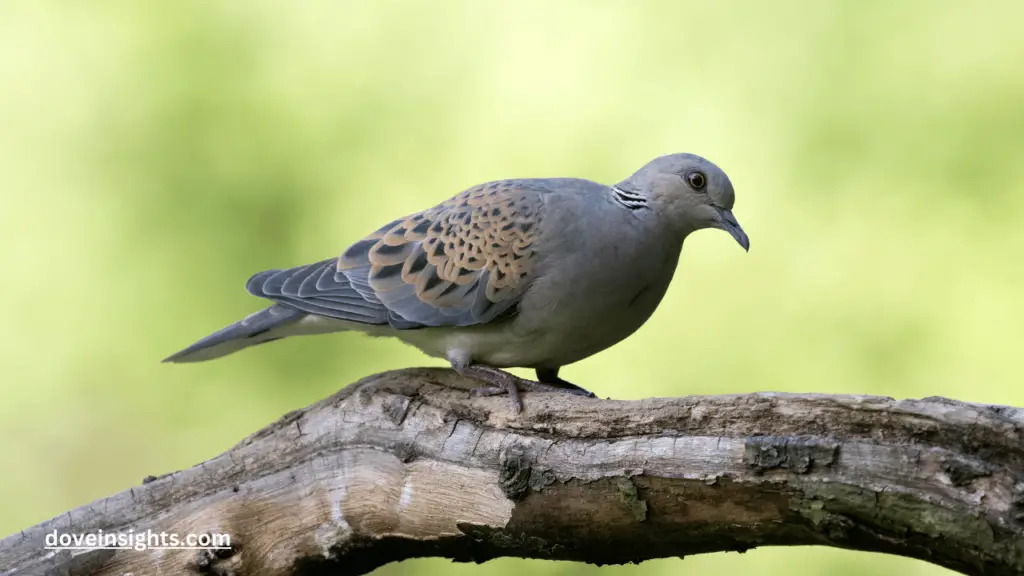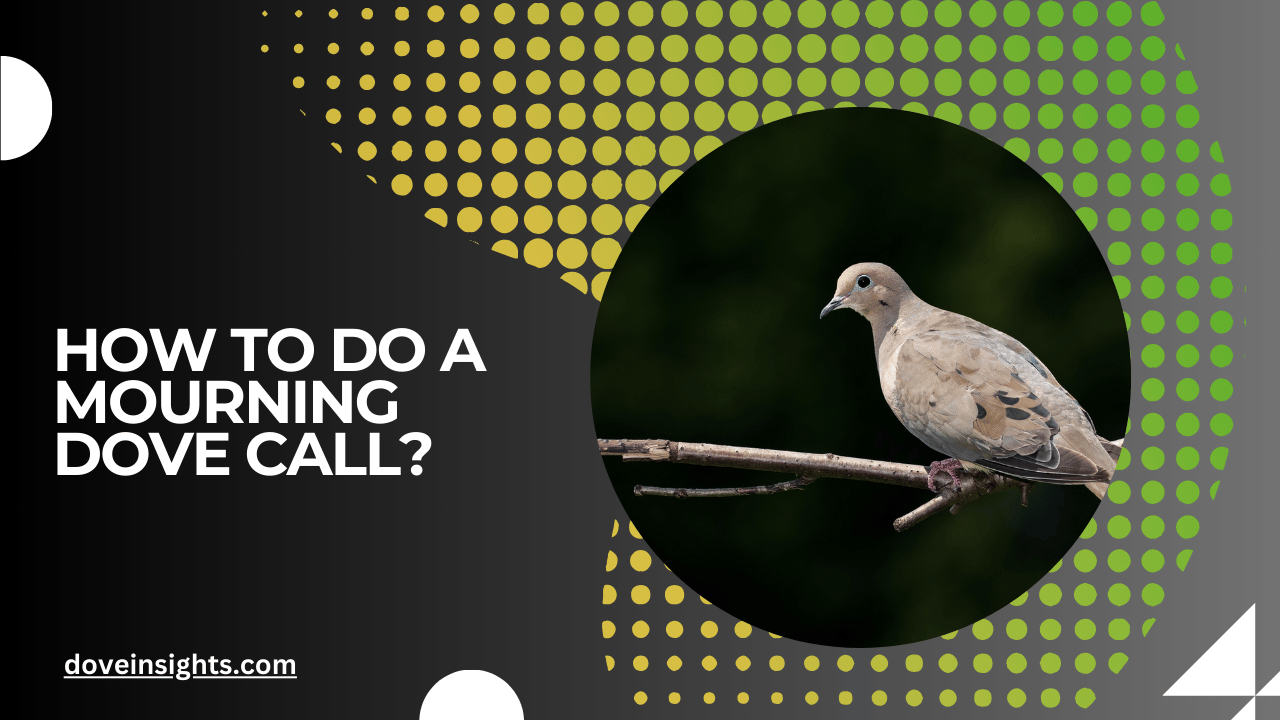Mourning doves, with their graceful flight and gentle demeanor, are a familiar presence across many landscapes, from quiet suburban yards to sprawling farmlands.
But while their serene appearance is widely admired, it is their distinctive call that often captures attention. This soft, melancholic sound has earned them their name, yet the question remains: how can we replicate this soothing, almost haunting call?
Understanding how to do a mourning dove call isn’t just a fun skill to impress others; it can also help bird watchers and nature enthusiasts connect with these birds in a way that deepens their appreciation for the species.
For many, the mourning dove’s call is associated with tranquility and nostalgia, making it a symbol of peace and comfort.
But what if you could mimic that call? Whether you’re trying to attract doves to your yard, connect with them during birdwatching expeditions, or simply enjoy the satisfaction of mastering a unique skill, learning how to do a mourning dove call can bring you closer to nature.
This article will guide you through the step-by-step process of learning the call, explore the importance of the dove’s vocalization, and provide helpful tips to make your imitation more authentic.
So, if you’ve ever wondered how to produce that signature coo that defines the mourning dove’s sound, read on!
We’ll explore everything you need to know, from basic vocal techniques to why the dove’s call matters. Let’s uncover the mysteries behind this beautiful bird’s vocalization and how you can replicate it.
Contents
- 1 The Mourning Dove’s Call – Understanding the Sound
- 2 Basic Techniques for Doing a Mourning Dove Call
- 3 Why Birds Use Calls – Understanding the Context
- 4 Advanced Techniques for Perfecting the Call
- 5 Practical Applications for the Mourning Dove Call
- 6 Conclusion:
- 7 FAQ’s
- 7.0.1 How long does it take to learn the mourning dove call?
- 7.0.2 Why do mourning doves coo so much?
- 7.0.3 Can you attract mourning doves with a call?
- 7.0.4 What time of year are mourning doves most vocal?
- 7.0.5 Can I use a mourning dove call to help with birdwatching?
- 7.0.6 What should I do if my call isn’t attracting doves?
The Mourning Dove’s Call – Understanding the Sound
Before you start mimicking the mourning dove’s call, it’s essential to understand what makes it unique. The mourning dove is known for its soft, mournful cooing, which is not just a random noise but a carefully constructed call that serves several important purposes.
- The Sound and Structure: A mourning dove’s call typically consists of a series of deep, resonant coos. It begins with a lower, softer coo and rises in pitch before trailing off into a final softer sound. The call is often described as a “coo-COO-coo” or “coo-COO-coo-coo”, depending on the bird. This vocalization is not only beautiful but serves practical functions in the dove’s life.
- Purpose of the Call: The mourning dove’s call serves a variety of purposes, including attracting mates, marking territory, and communicating with others in its flock. Understanding these functions is essential because when you mimic the call, you’ll want to be aware of when and how the dove might use it in nature.
- Vocal Anatomy: Mourning doves produce their calls using a unique structure known as the syrinx – the vocal organ that allows birds to make a range of sounds. The control they have over the pitch, volume, and rhythm of their call is one reason why mimicking it can be challenging, but also fun.
By learning more about the mourning dove’s natural call and what it means, you can better replicate it and make your own call more authentic.
Basic Techniques for Doing a Mourning Dove Call
Now that we understand the mourning dove’s call, it’s time to dive into how you can replicate it. It’s important to approach this with patience, as getting the tone, pitch, and rhythm just right can take some practice. Here’s how to start:
- Breathing Technique: To mimic the mourning dove’s call, proper breathing is essential. The call is typically produced in the throat and chest, so you’ll need to project sound using your diaphragm. Start by practicing deep breaths and breathing from your diaphragm to ensure that you have enough air to sustain the coo.
- Mouth and Throat Positioning: The mourning dove’s coo often has a low, resonant quality, so place the back of your throat in a relaxed, open position. Start by gently humming in the back of your throat and then transition to vocalizing. This will give you a full-bodied sound, much like the dove’s natural call.
- Creating the Coo: The dove’s call has a specific rhythm, so once you’ve mastered the breathing and positioning, begin producing a short “coo” sound. Start with a low note, then raise the pitch slightly as you progress, and end with a trailing, softer sound. Try to ensure your coo doesn’t sound too mechanical – aim for it to have a natural rise and fall, like the mourning dove’s call.
- Pacing: Pay attention to the speed of the call. Mourning doves often emit their calls in a relaxed manner, with pauses in between coos. You want to practice the timing and spacing of your coos to make it sound more realistic. You can start slow and gradually increase speed as you feel more confident.
- Recording and Playback: One of the best ways to perfect your mourning dove call is by recording your attempts and listening to them. Comparing your call to actual mourning doves’ calls will help you adjust the pitch, rhythm, and volume.
With consistent practice, you’ll be able to perfect the call and make it sound more like the real thing.
Why Birds Use Calls – Understanding the Context
Mourning doves aren’t just cooing for fun – their calls are important for their survival and social interactions. By understanding the contexts in which mourning doves use their calls, you can better mimic the call to achieve specific effects.
- Mate Attraction: During the breeding season, male mourning doves use their call to attract females. If you’re imitating the mourning dove call to call a mate or mimic the mating process, focus on gentler, softer tones that have a more soothing quality.
- Territorial Defense: Mourning doves also use their call to mark their territory and warn other doves to stay away. If you want to mimic this aspect of the call, try using a slightly louder, more forceful tone, often with more frequent intervals between each coo.
- Communication within the Flock: Doves may also communicate within their flock using various call types. For flock communication, the call is often more rhythmic, with shorter intervals between each coo. Experimenting with different pacing and pitch will help you understand how doves adjust their calls for various situations.
By practicing your mourning dove call within these different contexts, you’ll not only get better at mimicking the sound but also be able to replicate the dove’s natural social interactions.
Advanced Techniques for Perfecting the Call
As you become more familiar with the basics of the mourning dove call, you might want to refine your skills further. Here are some advanced techniques for achieving a more accurate, realistic call:
- Pitch Control: The mourning dove’s coo is characterized by a gentle rise in pitch and a gradual fall at the end. Fine-tuning your ability to control pitch will help create a call that sounds more like the real thing. Practice sliding through a range of pitches rather than staying on a single note.
- Multiple Coos: Real mourning doves often emit a series of coos in succession. Practice repeating the coo multiple times in a smooth, flowing manner rather than breaking the call up into abrupt, single notes. The call should have a fluid rhythm.
- Tone and Texture: Work on adding texture to your coos by adjusting the intensity and timbre. Mourning doves have a very rich, full sound that’s difficult to replicate at first. Experiment with varying vocal intensity – not every coo needs to be at the same volume.
- Environmental Factors: A mourning dove’s call can sound different depending on wind conditions or distance. To further enhance your call, consider practicing in open spaces to get the right projection, or adjust the volume depending on your environment.
By focusing on these advanced techniques, you’ll achieve a much closer approximation to a true mourning dove’s call.
Practical Applications for the Mourning Dove Call

Now that you’ve mastered the art of the mourning dove call, you might be wondering when and where to use it. Here are some practical applications:
- Attracting Doves to Your Yard: If you’re a birdwatcher or nature enthusiast, learning how to mimic the mourning dove’s call can help you attract these birds to your yard. This is especially useful if you’re setting up a bird sanctuary or just want to observe them in their natural habitat.
- Hunting or Birdwatching: Hunters or birdwatchers may use the mourning dove call to lure the birds in closer. This can be helpful when you’re trying to observe their behaviors or photograph them. Be respectful and avoid overuse of the call to prevent stressing the birds.
- Bird Ceremonies: Mourning doves are often released at ceremonies, such as weddings or memorials. If you’re organizing such an event, knowing how to call the birds can add to the symbolic experience.
Conclusion:
Learning to mimic the mourning dove’s call is an enjoyable and rewarding experience that connects you more deeply with nature.
By understanding the dove’s vocalization, using the right techniques, and applying advanced skills, you can replicate this beautiful sound and even use it to attract doves, enhance birdwatching, or simply enjoy the soothing power of the call.
Whether you’re a seasoned birder or a beginner, mastering the mourning dove call adds a unique and satisfying skill to your repertoire.
Remember, the key to success is practice and patience – so keep trying until you find the rhythm that feels just right. Happy cooing!
FAQ’s
How long does it take to learn the mourning dove call?
Learning to replicate the mourning dove’s call varies from person to person. For beginners, it could take several weeks of practice to get the rhythm, pitch, and tone correct. With dedication and regular practice, most people can begin to approximate the call within a few days or weeks.
Why do mourning doves coo so much?
Mourning doves coo frequently as part of their mating rituals, to mark their territory, and to communicate with others in their flock. The cooing also serves as a way to attract potential mates during the breeding season, and it helps establish their presence in the area to other doves.
Can you attract mourning doves with a call?
Yes, mimicking the mourning dove’s call can attract these birds, especially if they are in the area. They are drawn to familiar sounds, so making an authentic-sounding call can encourage them to approach, especially during the breeding season.
What time of year are mourning doves most vocal?
Mourning doves are most vocal during the breeding season, which typically begins in early spring and lasts until late summer. This is when males are particularly active in calling to attract mates and defend their territories.
Can I use a mourning dove call to help with birdwatching?
Yes, using the mourning dove call can help with birdwatching, as it can draw doves closer and provide better opportunities for observation. It can also help you better understand their behaviors and interactions, enhancing your overall birdwatching experience.
What should I do if my call isn’t attracting doves?
If your call isn’t attracting mourning doves, it could be due to factors like timing, location, or the quality of the call. Ensure you are practicing the correct rhythm and pitch, and try using the call during the early morning or late evening when doves are most active.








